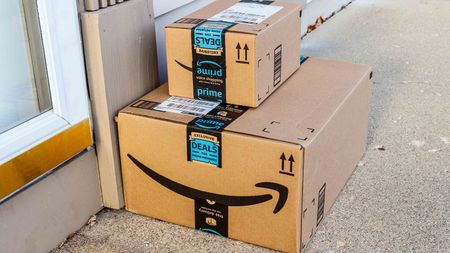Trim Energy Use
Help the enviroment and lower your electricity bill with these smart moves.

1. Take a flier on fluorescents. They no longer buzz, flicker or turn faces blue -- and they represent one of the brightest ideas yet for cooling down the atmosphere and your electric bill. Compact fluorescent lights (CFLs) approximate the glow of incandescent bulbs and use 75% less energy. If every U.S. household replaced just one incandescent bulb with a compact fluorescent, the emissions savings would be comparable to taking three million cars off the road for a year.
Don't let the price of CFLs -- as much as $7 each -- turn you off. The lights not only last ten times longer than incandescents but also save up to $60 in electricity per light over their lifetime. Some utility companies subsidize the energy-sparing lights, reducing the tab to $2 or so.
Not every CFL produces a warm, candlelight glow. To achieve that effect, look for one with a Kelvin temperature of 2,600 to 3,000, says Donn Davy, a home-energy consultant in Novato, Cal. Fluorescents that operate at higher temperatures provide hard, white light better suited for task lighting. Most compact fluorescents are spirals or U-shaped tubes, but you can also find them in bulb form. Some of the newer lights adjust to three levels or work with a dimming switch.

Sign up for Kiplinger’s Free E-Newsletters
Profit and prosper with the best of expert advice on investing, taxes, retirement, personal finance and more - straight to your e-mail.
Profit and prosper with the best of expert advice - straight to your e-mail.
Fluorescent lights contain small amounts of mercury. In some communities, youUll need to dispose of them as hazardous waste.
2. Vanquish the vampires. Remember James Thurber's story about the aunt who worried that electricity was leaking out of the wall sockets? She had a point, of sorts. Appliances that include a clock or operate by a remote, as well as chargers, "are all sucking electricity even when you're not using them," says Dale Bryk of the National Resources Defense Council. Of the total energy used to run home electronics, 40% is consumed when the appliances are turned off.
The obvious way to pull the plug on so-called energy vampires is to do just that -- pull the plug. If you don't want to keep rebooting your PC, you can reduce the juice to it by putting both the monitor and the computer itself in sleep mode when they're not in use. Computers operating on snooze control use about 95% less electricity than those running on full power.
To get yours to nod off, go to the control panel, where you will likely see "sleep" or "hibernate." The sleep mode powers down the computer, whereas instructing it to "hibernate" effectively turns the PC off while preserving your applications. Both modes let you resume work where you left off.
If your computer powers down by default, you can adjust how long it waits before going to sleep -- say, from 30 minutes to 15 -- or set the monitor to power down first. Don't bother using a screen saver, which neither preserves your screen nor saves energy.
To get all your devices on the same nap schedule, plug them into the Smart Strip Power Strip ($31 to $44, at www.smarthomeusa.com). The strip senses when your computer or TV is asleep and electronically unplugs devices that depend on them, such as a printer or DVD player, until the controlling device wakes up.
3. Harness the wind. Once you've cleaned up your own act, help clean up the power grid by buying so-called green energy -- electricity generated by wind or solar power or a blend of renewable resources. You'll pay about a half-cent to a few cents more per kilowatt-hour for green-powered electricity compared with electricity generated from nonrenewable resources.
If companies in your area haven't yet gone with the wind, you may still be able to pay a small premium on your utility bill to support green power elsewhere. Or you can subsidize it separately, with so-called green tags or renewable energy certificates.
To find certified renewable-power sources in your state, as well as programs that sell green tags or renewable energy certificates, go to the Green Power Locator at www.epa.gov, or to www.green-e.org.
4. Insulate your water heater. The newest electric water heaters have plenty of insulation. But if you have one built before 2004, wrap it in an insulating jacket (Thermwell, $20 to $30 at www.amazon.com) and save 10% -- about $30 -- annually on your water-heating bill.
5. Cover the hot tub. Hot tubs lose heat even with the top on. Float a plastic thermal cover ($32 at www.hottubessentials.com) under the hard cover and cut energy use by one-third.
6. Service the furnace. Have your furnace tuned every two years and you'll save about 1,250 pounds of carbon dioxide and 10% on your heating bills.
7. Turn down the heat. For every degree you lower your home's temperature during the heating season, subtract 5% from your bill, according to the Alliance to Save Energy. An Energy Star programmable thermostat ($70 at www.livingincomfort.com) saves more than twice its price within a year.
8. Set the washer to cold. Use cold water to wash your clothes and save 50% of the energy you would otherwise use for hot water. Set your dryer on the moisture sensor, not the timer, and cut energy use by 15%.
9. Dim the lights. Install light dimmers, which cut electricity use by the same percentage that they lower the light.
10. Stop drafts. As your father would say, don't heat the great outdoors. Put weatherstrip around the frames of your front and back doors and save about $30 per year in energy costs.
11. Lower your water temperature. Set your water heater at 120 degrees F. If your heater does not have a temperature gauge, dial down until the water feels hot, not scalding. (Before going too low, make sure your dishwasher has a booster heater, which gets the temperature back to 140 degrees F, necessary for proper cleaning.)
12. Insualte pipes. Wrap precut pipe insulation around exposed hot-water pipes, including pipes traveling through crawl spaces.
13. Use timers on lights. Install occupancy sensors or timers on lights in areas you use only occasionally and for exterior lights, which tend to get left on during the day, says Crissy Trask, a green-living consultant in Spokane, Wash. The devices start at $25 per switch at www.homecontrols.com. Anyone with basic wiring skills can install them.
Get Kiplinger Today newsletter — free
Profit and prosper with the best of Kiplinger's advice on investing, taxes, retirement, personal finance and much more. Delivered daily. Enter your email in the box and click Sign Me Up.

-
 Stock Market Today: It's Going to Stay Choppy for Stocks
Stock Market Today: It's Going to Stay Choppy for StocksAuto-focus can show us a lot about uncertainty on the ground and in the stock market.
By David Dittman Published
-
 Costco’s 4.5-Pound Tiramisu Cheesecake Might Be Your New Favorite Dessert
Costco’s 4.5-Pound Tiramisu Cheesecake Might Be Your New Favorite DessertIf you haven’t visited your local Costco bakery to check out the Kirkland Signature Tiramisu Cheesecake, you'd better get there early, they are flying off the shelves.
By Kathryn Pomroy Published
-
 Roth IRA Contribution Limits for 2025
Roth IRA Contribution Limits for 2025Roth IRAs Roth IRA contribution limits have gone up. Here's what you need to know.
By Jackie Stewart Last updated
-
 How to Find Foreclosed Homes: Best Foreclosure Listings Sites
How to Find Foreclosed Homes: Best Foreclosure Listings SitesMaking Your Money Last Find foreclosed homes for sale on these foreclosure listing websites. Search for properties on these free, paid or government sites.
By Bob Niedt Last updated
-
 Luxury Home Prices Rise as the Rich Dodge High Mortgage Rates
Luxury Home Prices Rise as the Rich Dodge High Mortgage RatesLuxury home prices rose 9% to the highest third-quarter level on record, Redfin reports, growing nearly three times faster than non-luxury prices.
By Kathryn Pomroy Published
-
 Four Tips for Renting Out Your Home on Airbnb
Four Tips for Renting Out Your Home on Airbnbreal estate Here's what you should know before listing your home on Airbnb.
By Miriam Cross Published
-
 Five Ways to a Cheap Last-Minute Vacation
Five Ways to a Cheap Last-Minute VacationTravel It is possible to pull off a cheap last-minute vacation. Here are some tips to make it happen.
By Vaishali Varu Last updated
-
 How to Figure Out How Much Life Insurance You Need
How to Figure Out How Much Life Insurance You Needinsurance Instead of relying on rules of thumb, you’re better off taking a systematic approach to figuring your life insurance needs.
By Kimberly Lankford Last updated
-
 Amazon Big Deal Days Is Coming! We’ve Got All the Details
Amazon Big Deal Days Is Coming! We’ve Got All the DetailsAmazon Prime To kick off the holiday season with a bang, Amazon Big Deal Days runs Tuesday, October 8 and Wednesday, October 9.
By Bob Niedt Last updated
-
 How to Shop for Life Insurance in 3 Easy Steps
How to Shop for Life Insurance in 3 Easy Stepsinsurance Shopping for life insurance? You may be able to estimate how much you need online, but that's just the start of your search.
By Kaitlin Pitsker Last updated